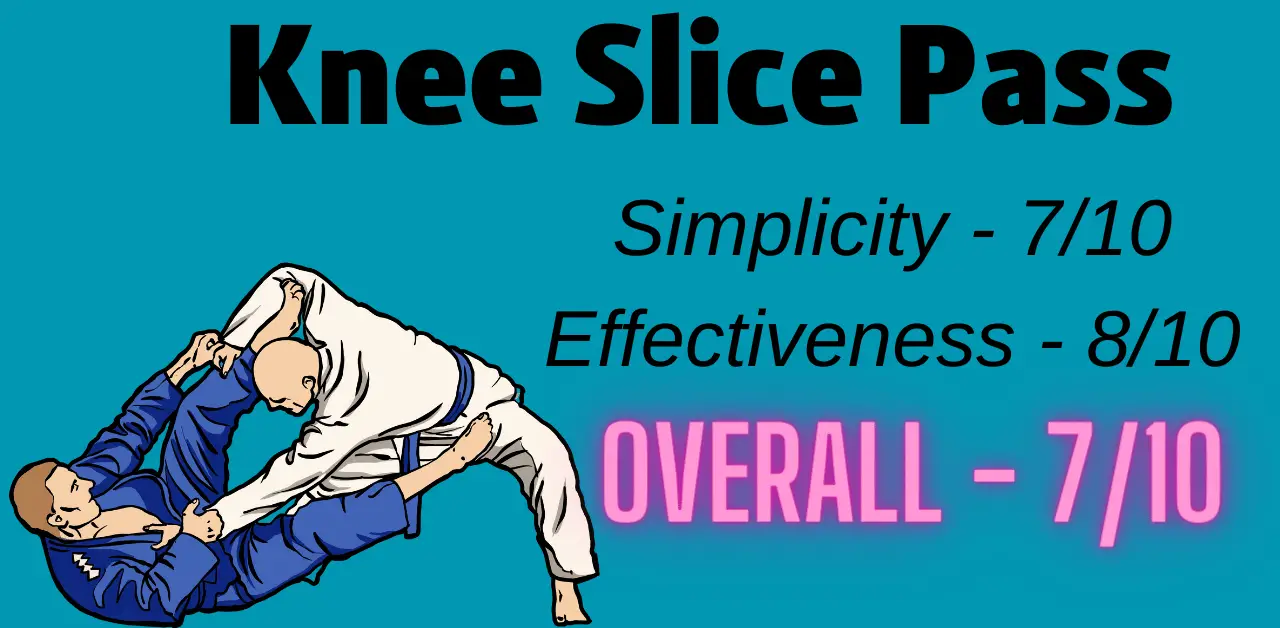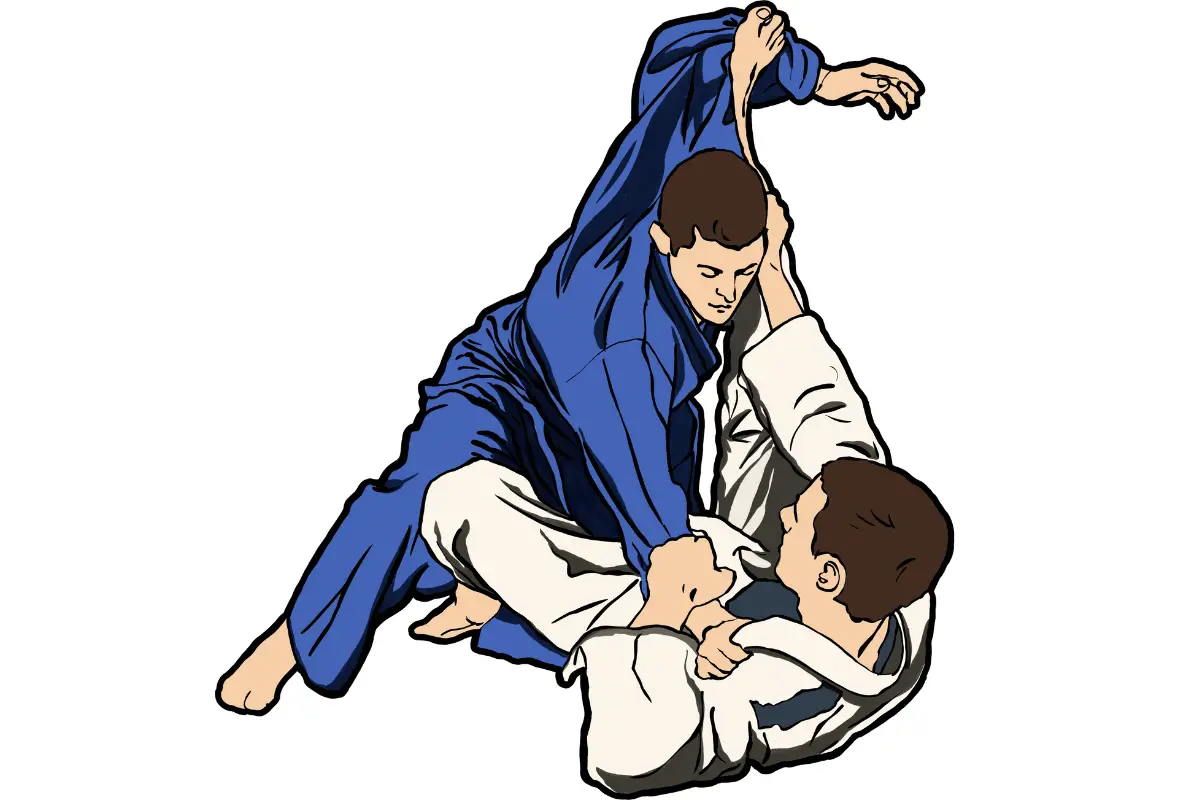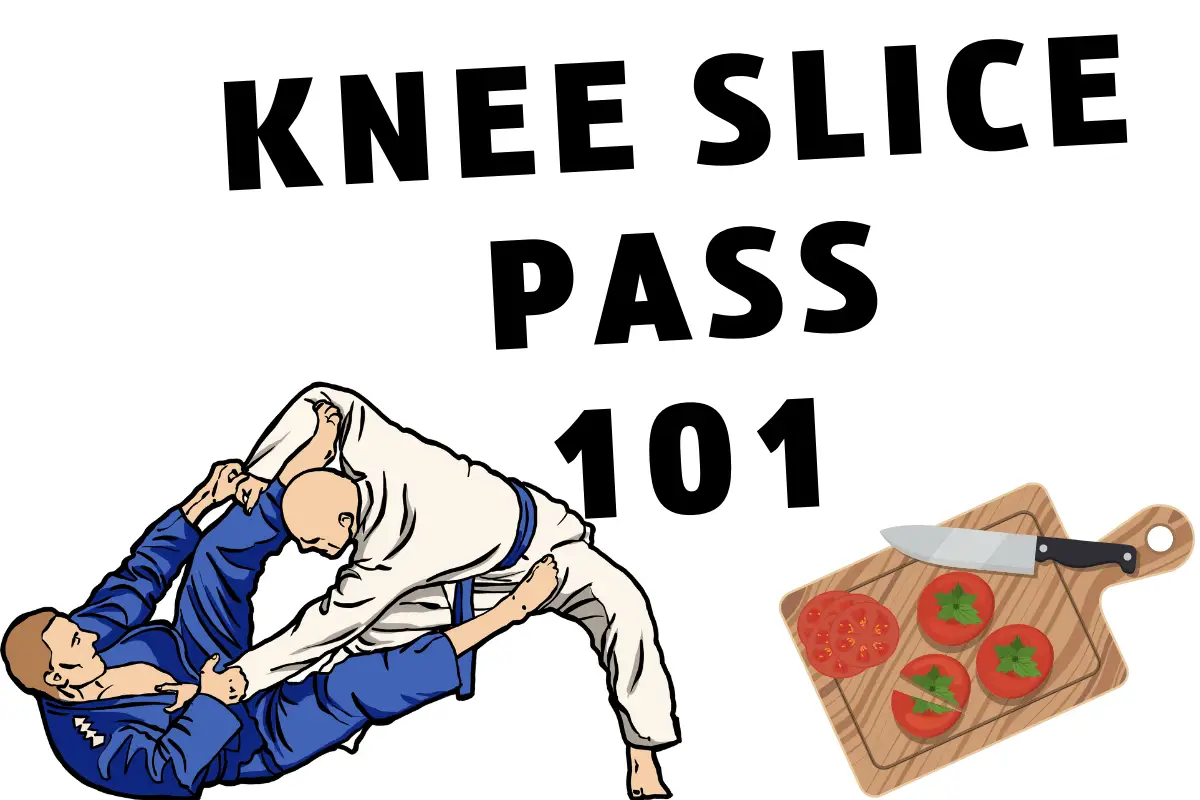Some will claim that the Knee Slice pass is Brazilian Jiu-Jitsu’s most important guard pass. Honestly, I agree. Most basic guard passes will utilize going from the sides to pass the opponent’s guard. However, the case differs from this one; let’s see what is different.
The Knee Slice pass utilizes going through the opponent’s guard to pass it. You first start standing up and push the opponent’s leg as far apart as possible. You then want to cut your knee through and start gaining control. Finally, you can transition to the side control and finish the fight from there.
Nonetheless, there are so many mistakes that novice grapplers make (even advanced grapplers make them at first!) that you can fix instantly and have more success with your guard passes.
I know how annoying it can be to try to pass the opponent’s guard and be unsuccessful; it makes you think you’re not good enough. But imagine succeeding and finishing the fight with a powerful submission, such as the Triangle choke. Wouldn’t that be awesome?
This article will help you fix as many of these mistakes as possible. As a result, I encourage you to read the entire article and not skip a section, as even if you think it’s obvious, it most likely has some ninja tips inside you don’t want to miss out on.
So, are you ready? I sure am!

Before we dive into the execution process of the Knee Cut pass if you want to learn which finishing submissions are most effective in BJJ, follow the link!
How to perform the Knee Slice pass
Now, this section will break down each step of the Knee Slice pass. Eventually, if you want to see more success with this pass, you must make as few mistakes as possible. If you make rookie mistakes with it (which is natural in the beginning), you won’t be able to pass the opponent’s guard as swiftly as you could.
That’s why I recommend reading each step (even if it sounds super simple, such as starting in a standing position while the opponent is in closed guard.)
You still want to read this step to ensure you understand what could go wrong and how to avoid it.
Enough introduction; let’s dive into the first step!
Step #1 – Start standing up
The first step will be to start standing up. You want your opponent to be in an open guard position. A few critical guidelines you want to follow is to maintain a good posture.
The worst thing you can do is slouch forward or lean backward. If the opponent knows something about grappling, he’ll utilize that and push you off-balance.
However, he won’t be able to do that if you maintain a solid posture. So, make sure to have that checked. Now, we can move to the second step.
Step #2 – Push the opponent’s leg away from his other leg
The second step of the Knee Slice pass will be to push the opponent’s leg away from his other leg. You do that by gripping his leg (the lower one, if possible) and pushing it away from the other leg.
What do you think will happen when you push one leg away from the other? Will the opponent allow you to separate his legs so easily? Most grapplers will follow through with their other leg, making this move useless.

So, let’s fix that by performing steps 2,3 and 4 together. Pay close attention now.
Step #3 – Place your hand on his ribs
Before you push the opponent’s leg away from the other, you want to place your hand on his ribs. What this will give you is a blocking point for the other leg.
Therefore, you can create upward pressure on the other leg. And now, you can separate his legs easily.
Step #4 – Create pressure with your elbow to separate the legs
The 4th step of the Knee Slice pass will be to create pressure with your elbow on the other leg (not the one from step #2.)
You want to perform steps 2, 3, and 4 together. First, you grip the opponent’s ribs and simultaneously create downward and upward pressure.
If you only push one leg, the other will naturally follow. As a result, the opponent will be in a Z-guard, which we don’t want.
Now, everything will follow through when you create pressure in both directions. Here’s what it’ll look like.
The entire point of these steps is to create space between the opponent’s legs.
We already understood that most guard passes tell you to go from the sides. However, everyone expects you to do that. Therefore, a few guard passes allow you to cut through the guard and gain side control.
Before moving on, follow the link to learn how to perform the Leg Drag pass, one of BJJ’s most effective and simple guard passes.
Step #5 – Cut through the guard with your knee
After creating space between the opponent’s legs, the next step will be to cut through with your knee. Again, you want to place your knee right aside from his belly, allowing you the advantage.
Some coaches will teach you to slip, and others will tell you to cut your knee inside deliberately. I’m a fan of doing what’s more comfortable and has more chances to work against the specific person you’re up against.
If, for instance, you believe you need to go for the cut as soon as possible without hesitation, then go ahead and slip through.
However, if you’re up against someone you think will predict the slip, more technical moves might work better; you can cut through with your knee by the book.
I’m confident both ways will work. See what’s comfortable for you and stick with it in training.
Step #6 – Maintain control over his upper body and hips
Congratulations! You’re past the opponent’s guard. However, you’re not done yet. You now want to finish the move by gaining side control.
You must control the opponent’s hips and upper body to do that. Likewise, you want to keep your elbow on his leg to maintain the hips. Now, you already have that elbow in position, so divide some of your focus to control this leg.
The other part (the more difficult one) is to control the upper body. The best way to do it is to go low and under-hook the opponent’s triceps. If you under-hook the triceps and maintain the distance between you and the opponent, he will use the same technique and under-hook you.
That’s why you must under-hook and close the distance by lowering your upper body to his. Then, you want to transition to side control.
Learn to perform the Stack Pass, BJJ’s most effective guard pass, flawlessly by following the link.
Step #7 – Gain side control
Now that you’re past his guard and control his legs and upper body, you can slowly transition to side control. Of course, from side control, your options really are endless. But there’s no doubt you have the advantage.
So, make sure to think it through and go for a submission you think will work. I’m a fan of the Kimura, straight arm lock, Armbar, and the Guillotine choke from side control.
You can, however, choose whichever technique you want.
That’s pretty much it. Then, by separating the legs, cutting through with your knee, maintaining control over his hips and upper body, and gaining side control—you’re past his guard using the Knee Slice pass.
Not only are you past his guard, but you’re also in an advantageous position to go for any submission you want to finish the fight.
You now know how to perform the Knee Cut pass. So, nothing stops you from training it now. So, what are you waiting for? Go train!
Best finishing submission after the Knee Slice pass
As you know, there’s no correct answer in Jiu-Jitsu. You must try many variations that achieve the same goal and choose the one you like most. So, here’s my favorite submission to use after the Knee Slice pass.
The best finishing submission after the Knee Slice pass is the Kimura. It’s not as hard to set up from the position you’ll be in after you cut through and attain side control. You must first isolate the opponent’s arm and trap it with the Kimura grip to perform it. The final step is to apply for the submission and wait for the tap.
If you don’t know how to perform the Kimura or are uncomfortable using it, follow the link to learn everything about it!
Variations of the Knee Slice pass
I want to examine two variations of the Knee Slice pass in this section. Of course, they’re the same other than the detail, how you cut through with your knee. Let’s see how they differ.
Knee Cut pass
I like to call the first variation the Knee cut because you cut through deliberately through the opponent’s guard. This one is more complicated than the second one because it requires more training and individual work.
You want to cut through the opponent’s guard and make sure you do so deliberately. Your primary guideline is placing your knee aside from the opponent’s belly (touching his belly).
Now, let’s examine the other one.
Knee Slide pass
This variation differs from the previous one in how you cut through with your knee. Again, you want to slide (without being technical) and try to land your knee as close as possible to the opponent’s belly.
Of course, you don’t want to rush through and knee your opponent’s ribs. That will disqualify you. However, you don’t want to overthink it and go for it (this will surprise your opponent and give you the advantage.)
Honestly, both variations are fantastic. I prefer the Knee Cut variation if you have trained it long enough and have the muscle memory to land perfectly aside your opponent’s belly. I would use the Knee Slide in any other case.
When to use the Knee Slice pass?
The world of Jiu-Jitsu is packed with effective guard passes. So, how do you know which one you should use and when? This section will focus specifically on the Knee Slice pass and when you should use it:
You want to use the Knee Slice pass when the opponent’s guard is wider than the typical one. If, for instance, his guard is narrow, your best bet will be to use the Toreando pass. However, when you spot a solid basis for the Knee Slice pass, you can start to set it up by separating his legs and cutting through.
If you want to learn more about the Toreando pass and how to perform it flawlessly, follow the link.
Is the Knee Slice pass effective?
The Knee Slice pass is one of BJJ’s most effective guard passes. It’s, in fact, more effective than most other ones because it utilizes forward and not side motion, which more grapplers expect. And still, if you don’t perform it correctly, your opponent will likely be able to block your move.
So, make sure to re-read any section you didn’t completely understand.
And if you want to learn about the X pass and how to perform it, follow the link.
Should I learn the Knee Slice pass?
The Knee Slice pass is a beginner guard pass you want to learn. That’s because it’s uncomplicated to execute and will give you side control quickly. In addition, having side control will allow you to go for a few finishing submissions, such as the Guillotine, Triangle, Americana, and Kimura.
If you want to learn about another highly effective guard pass that will allow you to pass more peoples’ guard, I have a complete guide on the Cartwheel pass and how to perform it flawlessly.
Final words
This website is about martial arts and their impact on our lives. I have many valuable articles on this website to help you achieve your goals faster. Whether it is to become a solid fighter or a more capable person, you’ll accomplish that more quickly by following Blinklift!
The Knee Slice (Cut/Slide) pass is one of BJJ’s most effective guard passes. If you want to start passing people’s guard and begin to win more fights, start learning it right now!
However, the Knee Slice pass isn’t the most effective guard pass. In fact, I wrote a complete guide on the most effective guard passes in BJJ. Follow the link to see which are the best ones.

